Retro Replay Review
Gameplay
Post Mortem offers a classic point-and-click adventure experience transplanted onto the ZX Spectrum, using an icon-based interface reminiscent of Cobra’s Arc. The screen is neatly divided into five functional areas: an illustrative graphic window, an inventory panel, a title bar displaying the game name and developer, a text output window, and an icon tray at the bottom. Rather than a mouse, you control a small animated cursor using the O and P keys to move left and right, then press SPACE or N to select. This system provides a direct, tactile sense of interaction with the environment—every command feels deliberate.
Exploration involves selecting foot icons to move west, north or east, a magnifying glass to examine surroundings, and speech balloons marked “Sí” and “No” for binary decisions. There’s even an in-game “Help” flag to offer hints, though relying on it too heavily may spoil some of the game’s sharper puzzle moments. A textual reminder of keyboard controls sits in the icon tray, ensuring you never forget how to pause (“STOP” sign), move, or interact. For purists, the absence of a traditional save system intensifies the stakes—mistakes can send you back to the very start.
What truly defines the gameplay is its unforgiving trial-and-error design. Many environmental decisions lead to instantaneous death screens, with no warning or foreshadowing. You’ll die by electrocution, misinterpreted dialogue choices, or wrong steps in Purgatory, forcing you to memorize safe paths and critical items. While frustrating by modern standards, this structure encourages meticulous note-taking and careful planning—qualities hardcore adventure gamers will appreciate.
The puzzles themselves center on retrieving three essential items—a concentrated miracles pill, a videotape of your own future, and a reincarnation certificate. Each quest phase is thoughtfully woven into the narrative environment, blending inventory-based challenges with dialogue-driven clues. Despite its punishing nature, Post Mortem rewards attention to detail and perseverance, rewarding dedicated players with a deeply satisfying sense of accomplishment.
Graphics
Visually, Post Mortem embraces the ZX Spectrum’s limited but charming aesthetic. The top graphic window displays static illustrations rendered in a restrained palette, using bold outlines and contrasting colors to convey mood and setting. From the drab confines of the programmer’s studio to the surreal landscapes of Purgatory, each scene feels distinct despite the hardware’s constraints—dark purples, muddy grays, and stark blacks heighten the game’s gothic atmosphere.
Inventory items are neatly depicted in the side panel, with pixel-art icons that are both recognizably detailed and suitably eerie. The concentrated miracles pill, for example, appears as a glowing capsule set against a black background, while the reincarnation certificate is represented by a folded parchment icon. Though minimalist, these visuals effectively communicate their purpose without obscuring gameplay clarity.
Animation is sparse but purposeful. The cursor’s footsteps animate smoothly during movement, and simple visual effects—such as an electric spark when Death strikes—underscore key moments without overwhelming the screen. There’s a deliberate economy to the presentation, forcing the player to imagine richer environments beyond the pixel grid. It’s a reminder of the era when imagination filled the gaps left by limited graphical hardware.
Sound effects are similarly economical: a portentous beep when entering Purgatory, a sudden crackle at the moment of electrocution, and occasional ambient bleeps. While lacking a musical score, these simple audio cues complement the visuals by reinforcing the overall tone. For retro enthusiasts, this stripped-down audiovisual package feels authentic and nostalgically immersive.
Story
At its core, Post Mortem spins a darkly whimsical tale of a ZX Spectrum programmer who unwittingly invites Death into his home. As a late-night coding experiment on a game about mortality, he doesn’t anticipate becoming the protagonist of his own creation. The arrival of Death—presented as an electrified specter—sets in motion the game’s premise: a forced journey through Purgatory in search of three salvation items.
The narrative unfolds largely through text descriptions and occasional dialogue prompts. The Spanish origin shows in the occasional turn of phrase, lending a touch of Mediterranean flair to the otherwise grim setting. While translations may vary, the core storyline remains coherent: gather the concentrated miracles pill to restart your life’s spark, find a videotape that records your yet-to-be-lived days, and secure the final reincarnation certificate to complete the cycle.
Death itself plays the role of both guide and antagonist, doling out cryptic hints before vanishing in a flash of static. His presence is a constant reminder of the stakes, making each misstep feel all the more consequential. The interplay between dark humor and existential dread gives Post Mortem a unique tonal balance—moments of absurdity undercut the solemn quest for redemption.
The story’s structure is linear, but it never feels rote. Discovering how the three items interconnect requires paying attention to dialogue cues, textual hints, and environmental details. Every discovery raises new questions about fate, free will, and the programmer’s own hubris. For players invested in narrative-driven games, Post Mortem offers more than mere puzzle-solving—it presents a compact allegory on life, death, and the creative impulse.
Overall Experience
Post Mortem stands as a challenging but rewarding relic of the 8-bit era. Its unforgiving trial-and-error gameplay and lack of a save system may deter casual players, but those with a taste for hardcore adventures will find immense satisfaction in unraveling its puzzles. The structured icon interface and clear text descriptions create a focused play experience that compels you to think carefully about each action.
The game’s retro graphics and minimalist sound design reinforce its moody themes without overstaying their welcome. While modern audiences may miss dynamic animations or orchestral scores, the ZX Spectrum’s modest capabilities are used to full effect, allowing room for personal imagination to enrich the world. Nostalgia fans in particular will appreciate the authenticity of the presentation.
Storytelling in Post Mortem is concise yet impactful, delivering a blend of dark humor and existential reflection. The journey through Purgatory, guided by the ever-present specter of Death, transforms what could have been a simple fetch quest into a philosophical exploration of mortality. The quest for the pill, videotape, and certificate feels meaningful, each item symbolizing a facet of the life-and-death cycle.
In the final analysis, Post Mortem is not for everyone—but for adventure veterans seeking a classic, thought-provoking challenge, it hits all the right notes. It demands patience, rewards observation, and delivers a uniquely somber narrative that lingers long after the screen goes dark. If you’re ready to test your resolve against Death itself, Post Mortem offers an unforgettable retro gaming experience.
 Retro Replay Retro Replay gaming reviews, news, emulation, geek stuff and more!
Retro Replay Retro Replay gaming reviews, news, emulation, geek stuff and more!
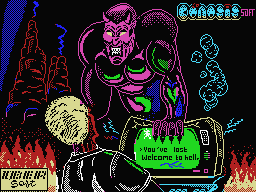
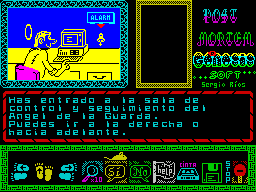
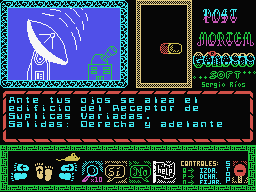
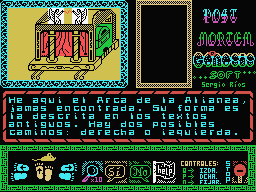
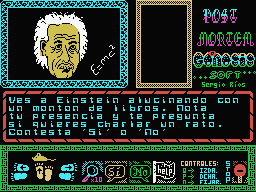
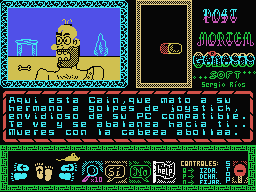



Reviews
There are no reviews yet.